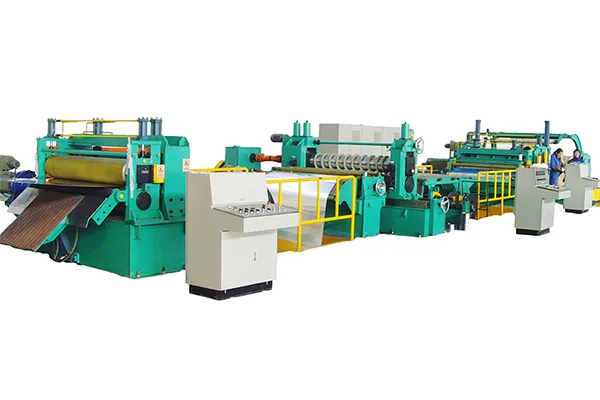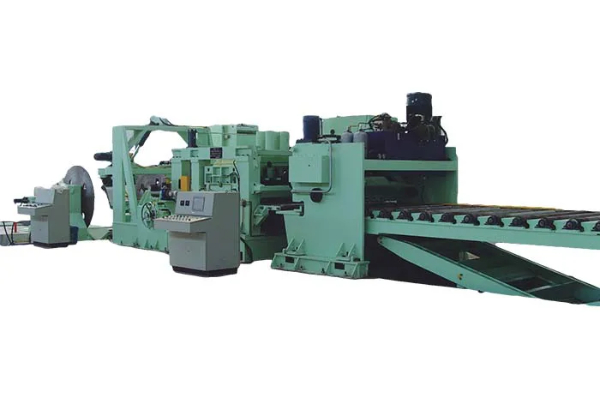
How to Select the Best Laser Cutter for Iron Sheets
- By:Metmac
- 2024-07-26
- 155
Laser cutting technology has revolutionized the metal fabrication industry, particularly for cutting iron sheets. Selecting the optimal laser cutter for your needs requires careful consideration of several key factors.
Laser Type
The type of laser employed in the laser cutter is paramount.
CO2 Lasers:
CO2 lasers emit a continuous beam of infrared light, providing high power and精度. They are ideal for rapid cutting of thin to medium-thickness iron sheets (1-10mm).
Fiber Lasers:
Fiber lasers utilize a fiber optic cable to transmit the laser beam, resulting in higher efficiency and beam quality compared to CO2 lasers. They excel in cutting thicker iron sheets (10mm and above) with exceptional precision.
Power Output
The power output of the laser cutter determines the cutting speed and thickness capacity.
For cutting thin iron sheets (1-5mm), a power output of 500-1000 watts is sufficient.
For medium-thickness iron sheets (5-10mm), a power output of 1000-2000 watts is recommended.
For thick iron sheets (10mm and above), a power output exceeding 2000 watts is necessary.
Bed Size
The bed size of the laser cutter defines the maximum dimensions of the iron sheets you can cut.
For small-scale operations, a bed size of 600x400mm or 900x600mm is suitable.
For medium-scale operations, a bed size of 1300x900mm or 1500x1000mm is recommended.
For large-scale operations, a bed size of 2000x1500mm or larger is necessary.
Cutting Speed
Cutting speed is crucial for productivity.
CO2 lasers typically offer faster cutting speeds than fiber lasers for thin iron sheets.
Fiber lasers excel in cutting thicker iron sheets with higher speeds due to their superior beam quality.
Look for laser cutters with high-performance motion systems to maximize cutting efficiency.
Accuracy and Precision
Accuracy and precision refer to the ability of the laser cutter to produce precise cuts.
Higher-quality laser cutters utilize advanced control systems and precise motion components to ensure cutting repeatability and accuracy.
Consider the intended application and tolerance requirements when selecting the desired cutting accuracy.
Additional Features
Besides the core aspects, consider additional features that enhance usability and productivity.
Autofocus and Height Control: Ensures optimal cutting quality by automatically adjusting the laser focus and cutting head height.
Material Handling: Automated material handling systems reduce manual intervention and improve safety.
Software Interface: An intuitive and user-friendly software interface simplifies operation and reduces setup time.
Conclusion
Selecting the best laser cutter for iron sheets requires a comprehensive evaluation of laser type, power output, bed size, cutting speed, accuracy, and additional features. By carefully considering these factors and aligning them with your specific cutting needs, you can make an informed decision and optimize your metal fabrication capabilities.
-
Mastering Form and Force: A Guide to Modern Metal Plate Bending Machines
2025/12/16 -
Demystifying Sheet Metal Laser Cutting Machine Price: The METMAC Value Perspective
2025/12/16 -
Metal Sheet Machinery: The Engine of Modern Fabrication and the METMAC Advantage
2025/12/16 -
Beyond the Bend: The Power and Precision of the Modern Sheet Profile Machine
2025/12/16
-
Advanced Sheet Metal Rolling, Laser Cutting, and Folding Machines for Precision Fabrication
2025/10/31 -
High-Performance Sheet Metal Bending and Cutting Machines for Modern Fabrication
2025/10/31 -
High-Quality Sheet Metal Equipment for Sale: Efficient Solutions for Modern Manufacturing
2025/10/31 -
High-Performance Sheet Metal Equipment for Sale: Forming and Shearing Solutions for Modern Fabrication
2025/10/22
-
A Guide to the Latest Innovations in Sheet Metal Folding Machines
2024/11/29 -
Key Features to Consider When Investing in a Sheet Metal Folding Machine
2024/11/28 -
Enhancing Precision with Advanced Sheet Metal Folding Machines
2024/11/27 -
How to Choose the Right Sheet Metal Folding Machine for Your Workshop
2024/11/26







